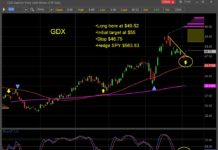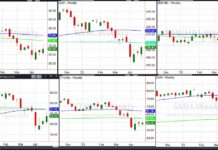As a result, I am not aggressively moving money back into stocks right now. (I did move money into the market late Thursday and early Friday of last week after the market had already corrected by 4.5 standard deviations. Some of those positions were sold at a loss mid-day Friday and the rest were sold during the bounce on Wednesday.) As of yesterday, many of my accounts have limited equity exposure and larger holdings in bonds. Those bond positions (TLT & EDV), by the way, and the general lack of stock exposure meant that my clients were well insulated from the market collapse.
How long will this last? Well, as you can tell by the collapse and quick rebound, things can change at any time as new information comes out.
I am prepared to monitor what’s happening, and as the facts change, so may what I do. For instance, the annual Jackson Hole summit is underway and if news comes out that indicates that the Federal Reserve will keep rates lower for longer, that could be the catalyst for stocks to move back up toward (or even surpass) the all-time-highs. On the other hand, the Fed indicating that it will be lower for longer is actually a tacit admission that the economy is not as strong as they say it is. The market may place greater emphasis on the lack of growth and we could see markets plunge again. I would rather see which way the market reacts before putting money at risk.
Over time, though, central banks around the world still have not found a way to create real economic growth; they all continue to follow the same playbook that Japan has used for 35 years. And after all that time it still hasn’t worked for them.
Good luck out there and thanks for reading.
Twitter: @JeffVoudrie
Author carries exposure to mentioned securities at the time of publication. Any opinions expressed herein are solely those of the author, and do not in any way represent the views or opinions of any other person or entity.





